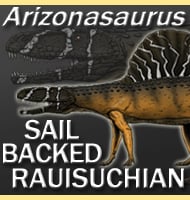Valdoraptor
In Depth When first described in 1858 by Richard Owen, the type specimen of Valdoraptor was interpreted as a foot belonging to the armoured dinosaur Hylaeosaurus. In 1881, John Hulke scored nearer the mark by identifying the foot as belonging to a theropod dinosaur. From here the foot was attributed to Megalosaurus by Richard Lydekker … Read more
